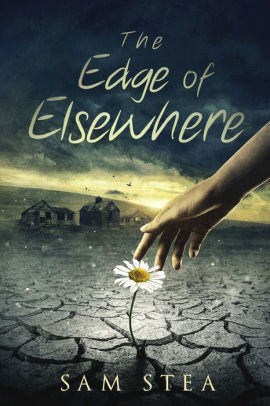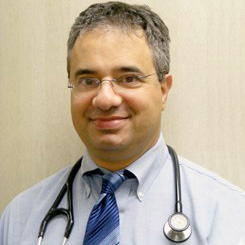Fiction as a tool for climate activism
Guest post by Dr. Sam Stea
November 2020
| “You don’t know what you have around you,” Abbey said. “All the beauty that’s here – the earth and sky, the trees, every color in the world, the sound of the birds, and the wind through the leaves. Even the floating fog. It’s all so beautiful. The grass beneath my feet. Even the shadow each blade of grass makes. I see it all. How can I not see it all? It’s beautiful and amazing. One day, it will be gone.” – “The Edge of Elsewhere” by Sam Stea |
||
Fiction can be a powerful tool to draw attention to things too frightening to contemplate. Consider the TV movie “The Day After”, 1983, which brought directly to the public the realistic horrors of nuclear war as experience by three families in the American Heartland.
I remember in college the sense of dread it brought to my friends and me, the idea that a nuclear war was real and plausible, and not some black swan event that the human race likely will avoid out of the faith in the doctrine of Mutually Assured Destruction. The movie’s power was in the shift of perspective: nuclear war experienced through the lives of ordinary and relatable people, rather than an abstraction portrayed by real-time news, or politics, or documentaries.
It is my firm belief that this work of fiction, about the unthinkable, brought about changes in public policy concerning nuclear proliferation, leading to a key weapons treaty with the Soviets in the late ’80s. Fiction making history.
 This notion, of the power of fiction and a good story, is what drove me to write, “The Edge of Elsewhere.” The book portrays three young people from a climate-wrecked future, finding a means of time travel, and venturing back to 1971. There, they experience for the first time the lost beauty of the natural world and encounter kindred spirits within members of the counterculture movement and war protesters.
This notion, of the power of fiction and a good story, is what drove me to write, “The Edge of Elsewhere.” The book portrays three young people from a climate-wrecked future, finding a means of time travel, and venturing back to 1971. There, they experience for the first time the lost beauty of the natural world and encounter kindred spirits within members of the counterculture movement and war protesters.
The passage above is taken from my 14-year-old heroine, Abbey, as she attempts to convey the experience of seeing the whole of living nature for the first time. The message of the book is hope. My hope in writing it is for others to see our common future from a new perspective, from the eyes of young people who will inherit the world we create or destroy for them.
The science of climate change is real and comparable to the same standard medical science I use to take care of patient with end stage renal disease. As a nephrologist in solo practice in Central Pennsylvania, it has been difficult for me to become engaged in the climate crisis. At the same time, I cannot ignore the resounding maxim that defines me and my colleges as physicians: First do no harm.
Regarding the climate crisis, inaction on this grave heath issue is harm. But what can I, a doctor overwhelmed in my own practice of medicine, do to ignite the fires of change? I can write a story.
In the early hours of the morning and late in the evening, I write; a story of survival and of hope that might sway some people into action. I want to make a difference. I must, as a physician, and a father.
Ultimately, the climate crisis is being fought in our clinics and hospitals, and we physicians will be accountable. I choose to be accountable now. Writing this book is my best individual effort to join the fight.
***

Dr. Sam Stea
Sam Stea is a practicing physician, proud husband, and father of a wonderful son and daughter. Some time ago, Stea took a simple and deliberate step back from the complexities of life to see himself in a much bigger picture, within a context of past and future, within the balance of the human species with nature, and with what is truly lasting beyond one’s own years. His great hope is that others in health care, physicians, nurses, therapists of all kinds, scientists and administrators, and young people everywhere will join him in his fight to better inform the public that climate change is the greatest imminent health challenge humanity has yet to face.
